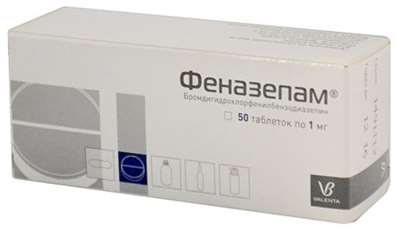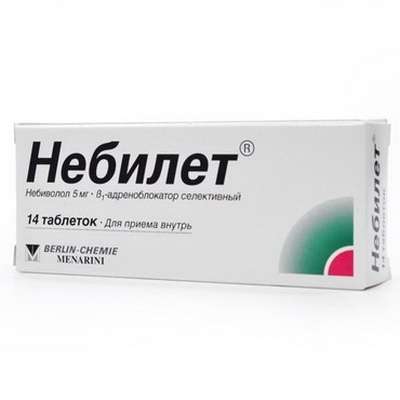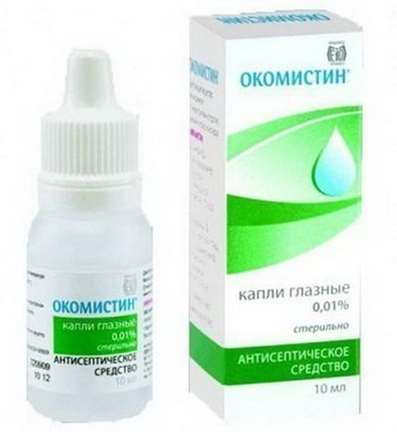Blockers of miostatin
30 Nov 2016
Blockers of miostatin suppress action of miostatin, specific protein responsible for regulation and restriction of growth of muscular tissue. It leads to the fact that muscles will remain "beefy" as though the athlete daily continues to go to gym though actually it stopped occupations long ago.
Within the last decades searches of ways of recovery and increase in muscle bulk were conducted not only by means of low-molecular anabolic and anticatabolic medicines, and also DD, but also at the level of search of the genes responsible for a homeostasis of muscular tissue. In particular, breeds of the meat cattle with a phenotype of so-called doubled muscle bulk (breed Belgian blue and piedmontese) were an object for detection of such genes.
In these searches 1997 became critical. Initial success was achieved by means of genetic engineering (a so-called method of a gene knockout). In laboratory of professor SI Jean Li at university of John Hopkins (Baltimore, the USA) mice, homozygous on damage of a gene of a factor of GDF-8 (Growth and Differentiation Factor 8, or a factor of growth and a differentiation of N8) were removed. At these mice resulted from an experiment considerable (2 — 3-fold) increase in all skeletal muscles. At the same time both number of muscle fibers increased (giperplasiya), and their thickness (hypertrophy). The received mice were quite viable and gave posterity.
Regular mouse (a) and mice, homozygous on damage of a gene of a factor of GDF-8 (c)
As a result of these experiments it was proved that protein GDF-8 is the negative regulator of growth of skeletal muscles. Therefore he received the name miostanin, and animals with such defect miostatin-zero mouse. Do not forget take Bonomarlot for better results.
After this opening in the same 1997 in several laboratories cloned and have established the sequence of a gene of a miostatin at cattle of breeds Belgian blue and piedmontese. It was revealed that these animals have mutations in a gene of miostatin (various in each of breeds) which in one way or another result in lack of functionally active miostatin. Unlike mice to the damaged gene of miostatin these breeds have only giperplasiya of muscular tissue without hypertrophy. Though in relation to this meat cattle use the term "phenotype of the doubled muscle bulk", total increase in all muscles makes no more than 40% in comparison with other meat breeds, but also it, certainly, is invaluable to meat livestock production.
Ability of miostatin to limit growth of muscle bulk has drawn attention to him as to a potential target for therapeutic intervention at degenerate diseases, injuries and other pathologies of muscular system at once, and also — for application in sports medicine and sport.
It has been established what miostanin on the structure belongs to TGF-beta proteins (Transforming Growth Factor-beta transforming growth factor - beta) which represent factors necessary both during an embryogenesis, and in an adult state for a fabric homeostasis.
Miostatin has the general structural properties with other proteins of the TGF-beta family:
- hydrophobic kernel around a N-trailer part of a molecule which serves as a sekretorny signal;
- the conservative block from four amino acids in a S-trailer half of a molecule which is a signal for processing (proteolytic splitting in the course of formation of active protein from the predecessor of bigger length);
- nine remains of cysteine in the S-trailer part of a molecule, necessary for formation of functionally active secondary structure. After processing the S-trailer domain which becomes functionally active miostatin remains nekovalentno connected with a N-trailer part of a molecule which is called in this case pro-peptide;
- miostanin, as well as other TGF-beta proteins, it sekretirutsya in the form of an inactive complex with pro-peptide.
Process of an expression of miostatin, perhaps, is regulated by Titin-cap protein as it is established that synthesis of this protein reduces an exit of miostatin from cages. In the form of a complex with pro-peptide miostanine is inactive as he can't contact the receptor. For activity manifestation miostanin it has to be separated from pro-peptide. Activation of miostatin is carried out as a result of pro-peptide splitting by proteases like katepsin of D.
It is considered that the bulk of the synthesized miostatin shows the action in autokrinny and parakrinny way, i.e. miostanin works in the cage synthesizing it and in the immediate environment. But recently in experiments of in vivo the possibility of manifestation of his activity in an endocrine way, i.e. system impact of locally synthesized miostatin on all muscular groups is proved.
For manifestation of the action miostanin has to contact the receptor corresponding to him. It is shown what miostanin interacts with receptors of an aktivin of ActRIIB. Mice with the changed ActRIIB receptors incapable at binding of a miostatin to transmit a signal in a cage, also possess the increased muscles, as well as miostatin-zero mouse.
In an embryogenesis the expression of a gene of miostatin begins in cages of the miogenny line and proceeds in adult axial and paraxial muscles. At the same time the level of synthesis of miostatin is various in different skeletal muscles.
Subsequent researches have found an expression of a gene of miostatin in some other fabrics. It is shown what miostanin is in fibers Purkin in heart, synthesis of MRNK of miostatin is found in mammary glands and adipocytes.
It is possible to assume that sexual distinctions in number of miostatin, along with other factors, influence sexual dimorphism in development of skeletal muscles. At the identical level of synthesis of MRNK of a miostatin, i.e. level of an expression of a gene of miostatin, the level of miostatin is higher at women, than at men.
As the expression of a gene of miostatin which has begun in an embryogenesis proceeds in post-natal muscles and muscles of an adult organism, miostanin, apparently, plays an essential role at all stages of a miogenez and in a fabric homeostasis of skeletal muscles in an adult state at influence of various functional incentives, including immobilization.
Activation of genes of MyoD and Myf5 gives rise to the miogenny line of cages, progenitorny cages (cages predecessors) give rise to myoblasts. Activation of a gene of a miogenin stimulates myoblasts to division (proliferation) and the subsequent differentiation. Miostatin, activating a gene r21 and synthesis of Smad-proteins, limits (or stops) proliferation of myoblasts. The myoblasts which stopped division pass to a morphogenesis stage, i.e. to laying of predecessors of muscle fibers — myotubes. Interacting with each other, they are built in chains and merge in the extended multinuclear cages (sintsitiya). After merge the differentiation of membranes, a biochemical and cytoplasmatic differentiation therefore there are finally created mature muscle fibers begin.
Mature muscle fibers are a product of a final differentiation, i.e., they as structure in general, cellular kernels in fibers can share both growth and regeneration of muscles are performed thanks to npoliferatsii of cages satellites. Cages satellites have the sizes close to the sizes of cellular kernels of muscle fibers and, as well as these kernels, are on the periphery of muscle fibers. Only the electronic microscopy allowed to establish that they are physically separated mature muscle fibers and are between a sarkolemmy and basal membrane.
In muscle fibers the amount of cytoplasm falling on one kernel is in certain rather narrow limits (the mionu-klearny domain). Increase in the sizes of fiber (hypertrophy) is reached thanks to merge of proliferating cages satellites to fiber so the sizes of the mionuklearny domain remain in the same limits, as to a hypertrophy. An incentive for division (proliferation) of cages satellites at adult organisms is first of all the injury, including at the level of separate muscle fiber. Leaving a condition of rest, cages satellites begin to expressirovat miogenny markers, i.e. the genes characteristic of myoblasts are activated. In the course of regeneration of the injured skeletal muscles of a cage satellites merge with the existing muscle fibers (hypertrophy) or among themselves, creating new fibers (giperplasiya).
Defining a share of cells satellites in muscular tissue, it is more convenient to compare miofibrilla and cells satellites on number of kernels as muscle fibers of a mnogoyaderna. In an adult status of a kernel of cells satellites make 2 — 7% of total number of kernels in different muscles. In case of the birth of a kernel of cells satellites make about 30% of total number of kernels in muscles of the lower extremities. These neonatal cells satellites proliferirut and merge with the growing muscle fibers, introducing in them additional kernels during the post-natal growth of skeletal muscles.
In response to a miotravma of a cell satellites are activated and proliferirut. A part of cells after division returns to a rest status (for restoration of a pool of cells satellites). The main part of cells as a result of a hemotaksis migrates to the damaged sections and depending on damage level or merges with the damaged muscle fiber or cells satellites merge with each other, forming new fibers. Kernels of recently merged cells satellites are in center of fibers. In process of restoration of intracellular structures of a fiber they migrate to the periphery.
Thus, cells satellites provide maintenance of the functional status of skeletal muscles of an adult organism. They are necessary for restoration of the damaged muscle fibers and are a source of additional kernels in case of a hypertrophy of muscles as a result of training occupations. The hypertrophy and (or) a giperplaziya of skeletal muscles at animals with absence of the functionally active miostatin proves that it ìèîñòàòèí influences proliferation of cells satellites as post-natal growth of muscles and increase in number of kernels in muscle fibers in development to an adult status happens due to proliferation of cells satellites.
In case of activation of cells satellites (an output from a rest status) in them the genes characteristic of myoblasts begin to work and, thus, cells satellites become myoblasts. The level of proliferation of cells satellites in adult muscles is also restricted miostatiny, as well as proliferation of myoblasts in an embryogenesis. It is shown, as protein of TGF-beta inhibits proliferation of cells satellites in culture.
Myostatinum role in a homeostasis of mature muscle fibers is fully not found out yet, but there is a series of works on a research of level of synthesis both Myostatinum MRNK, and Myostatinum in muscles in an adult state on animal models and for the person at various physiological states.
So, the systemic superexpression of Myostatinum at mice within two weeks leads to loss over 30% of lump of a body and 50% of muscle bulk, i.e. a picture almost identical to a cachexia syndrome at the person. It is established that Myostatinum can work in an endocrine way. Introduction of inhibitors of Myostatinum of a pro-peptide or follistatin considerably slows down loss of muscle bulk at the increased Myostatinum level.
It is also important to notice that along with loss of muscle bulk there is almost total loss of subcutaneous fat that will also be compounded with data on influence of Myostatinum on a differentiation of adipocytes.
At people of different age categories Myostatinum level in blood serum is highest at men and women 72 years are more senior and correlates with sarkopeniya degree. At men and women of middle age Myostatinum level in Serum is in turn higher in comparison with young people. Indexes of pure body weight and muscle bulk of a body in inverse proportion correlate with serumal Myostatinum in all age categories. These data allow to consider Myostatinum not just as a biomarker of an age sarkopeniya, but as supressor of muscle bulk.
Intramuscular and serumal concentration of Myostatinum are enlarged at patients with AIDS in a stage when loss of muscle bulk is observed. At the same time concentration of Myostatinum in inverse proportion correlates with an index of pure body weight. These results show that Myostatinum makes a contribution to loss of muscle bulk at AIDS, and also that blockers of Myostatinum can be useful in medicine.
In direct experiments on rats it is taped that the loss of muscle bulk happening at space flight is bound to Myostatinum level augmentation in sceletal muscles (2 — 5-fold in various muscles by 17th day of flight). These results show that Myostatinum one of basic elements in a multifactorial pathophysiology of the muscular atrophy occurring in the conditions of space flight.
In land researches with participation of people it is established that by 25th day of a motionless regimen (as model of space flight) the level of Myostatinum increases by 12%.
The immobilization of muscles at mice leads to increase in concentration of MRNK of miostatin (an expression of a gene of miostatin) in the immobilized muscles already in 24 h an experiment though loss of muscle bulk begins only after the day before yesterday. The most unexpected result received in these experiments consisted that synthesis of miostatin considerably differed in the muscles containing various isoforms (options) of a heavy chain of a myosin. At an immobilization synthesis of miostatin considerably increased in fast-twitch muscle fibers which atrophied by seventh day for 17% while m. soleus in which synthesis of miostatin wasn't found, atrophied besides to day for 42%. The m of soleus consists only of fibers of types I and Pa whereas m. gastrocnemius and t. plantaris represent the IId/x and II types, though contain types I and On. Only the acceptable explanation of this phenomenon — influence of the miostatin synthesized by m. gastrocnemius and hectare. plantaris, on m. soleus, i.e. endocrine influence.
Other explanation consists that synthesis of a miostatin correlates with type of fibers, i.e. synthesis of miostatin at an immobilization of muscles at mice correlates with an isoform of a heavy chain of a myosin of IIb.
On model of muscular dystrophy of Dyushen (a mouse of the mdx line) it is shown what within three months leads blockers of miostatin (way of injections of antibodies to a miostatin) to increase in muscle bulk, the sizes and forces of muscles. Hybrids of mice of the mdx line about miostatin-zero mice have the best condition of muscles, than initial mice of the mdx line is considerable. Normalization of a condition of muscles at mice of the mdx line by blockade of miostatin or crossing about miostatin-zero mice opens new opportunities for treatment of the pathologies which are followed by loss of muscle bulk.
It has been suggested about existence of inhibitors more than forty years ago — keylon (chalones) which, being synthesized by this fabric, inhibit her growth and, thus, support the adequate mass of this fabric. This assumption was confirmed in case of skeletal muscles subsequently.
It is obvious that application of blockers of miostatin will cause revolutionary changes in medicine and sport and, perhaps, it will be widely used in the therapeutic purposes. Since 2008 use of inhibitors of miostatin in sport is forbidden.
The vaccine from Pharmacom Labs
Since 2007 and till present it was conducted several researches which showed that introduction of foreign pork Myostatinum to mice caused immune reaction with development of antibodies to Myostatinum. Thus, scientists offered instead of introduction of more expensive antibodies, to enter recombinant Myostatinum as a vaccine, and thus, to induce the immunity to bind and block both foreign, and own Myostatinum. "Attention" Researches of a vaccine were conducted only on laboratory rodents.
It is possible to get acquainted with the mechanism of action and receiving a vaccine in article in more detail.
On May 23, 2016 Pharmacom Labs declared in the branch on the international MESO-Rx resource release of own vaccine under the name Pharmacom GEN M. The representative of the company didn't disclose production details, however it is obvious that the plasmid vector about a genome of animal Myostatinum was applied to production, with the subsequent introduction in a bacterium of Escherichia coli which breed and in the course of vital activity begin to produce Myostatinum. Also the representative of Pharmacom Labs for fun told that the vaccine is already tested on the Russian bears. And if someone meets in the wood of such bear with the blocked Myostatinum and will take with it a selfie, then Pharmak will provide a free course for a year. On July 9 the representative Pharmak reported that the vaccine continues to be tested on the Russian athletes. Now from side effects it was reported only about temperature increase to 37,5-38 °C in the first days after an injection.
Since June, 2016 active advertizing of a vaccine on the Russian sports resources is started.
Since June the new product of GEN M2, with the description is also added:
"If in the first version of a vaccine of a blocker of miostatin we forced an organism to develop a blocker of a miostatin, then in the new version we force ogranizm to develop also own somatropin. In what plus near regular hormone of growth? Well you just think, regular hormone you stick also in 2-3 hours its level in blood at that level again, as was to an injection. That is, it is eternal waves. Yours somatropin is developed gradually within all two months, yielding much better result."
Also nothing is reported about the mechanism of action GEN M2.

 Cart
Cart





